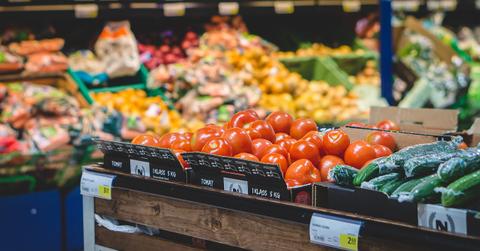Amazon Purchases Whole Foods In A 'Game Changer' Move In Grocery Retail
Amazon, the world's biggest online retailer, expands their portfolio with a $13.7 billion acquisition of Whole Foods. The purchase gives them a huge opportunity to compete in the grocery marketplace and to expand their Prime Now service.
Updated May 23 2019, 4:48 p.m. ET
Amazon has dominated many aspects of the retail market, but the grocery industry has always been limited for obvious reasons. No speed of shipping can bring fresh food and dairy products right to people’s doors. However, the online giant has made incredible waves on Friday by announcing the purchase of organic grocery store, Whole Foods Market.
The deal is worth $13.7 billion and it boosts Whole Foods’ value to $42 per share. That’s a 27 percent increase on where the company’s stock was at the end of the day on Thursday. CNBC’s on-air stocks editor, Bob Pisani, says that Amazon essentially got the grocery store for free as their “market cap has appreciated by about $15.6 billion today.” However, the online retail giant will also be acquiring Whole Foods’ debt which is around $1.1 billion.
This becomes Amazon’s biggest acquisition by a landslide. Everything else doesn’t even reach the billion dollar plateau. Twitch Interactive, a website that gives people the ability to stream video games they play and has been one of the biggest platforms for the growth of esports, was Amazon’s next-biggest acquisition at $970 million back in 2014. The online retail giant has also bought other famous entities like Zappos.com, Alexa Internet, and Audible.
With the purchase of Whole Foods, Amazon is declaring two things -- they’re ready to dive into the grocery marketplace and they want to expand their presence in brick-and-mortar stores. The company has continued to build their Prime Now program, which gives select areas free two-hour delivery on select items. Bigger cities have the ability to deliver restaurant items and groceries from local stores within one hour with the service.
A major obstacle with improving this service is building more warehouses. In order to bring fresh produce, meats, and other items consumers would like, Amazon would need a lot of local stores. They have a few original brick-and-mortar stores and the company has tested the idea of convenience hubs that don’t have checkout lanes, but buying out Whole Foods immediately gives them over 400 stores to help their cause. There’s a chance existing grocery stores could morph into the “Amazon Go” design.
Meanwhile, Whole Foods’ buyout comes at a good time for the company. Back in February, the company lowered their expectations for 2017 and no longer put a focus on opening more stores as growth became stagnant. The grocer has also been trying to fend off Jana Partners, an investor that has pushed for a sale.
CEO John Mackey reportedly called the investors “greedy bastards” and suggested they were spreading “propaganda” out there to make a quick buck. However, the investment firm will get a significant payday as their stocks rise by 37.5 percent, or $300 million from the $800 million they put into the stock market.
Mackey will remain as CEO of the company and similar to other Amazon acquisitions, the Whole Foods name will live on. CNBC analyst Jim Cramer calls the move a “game changer” and predicts that Amazon “will dominate food [retail] within the next two years.”
